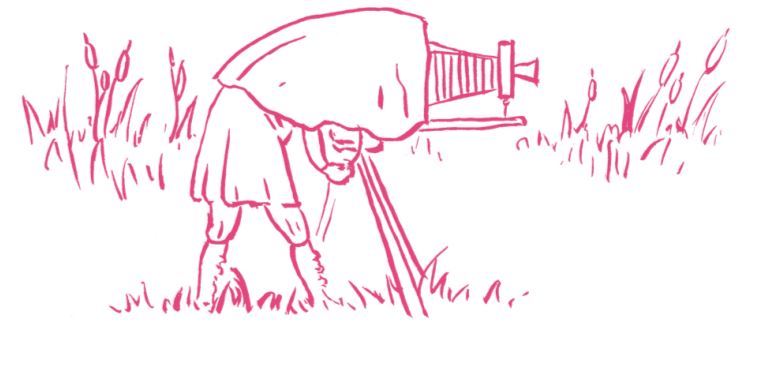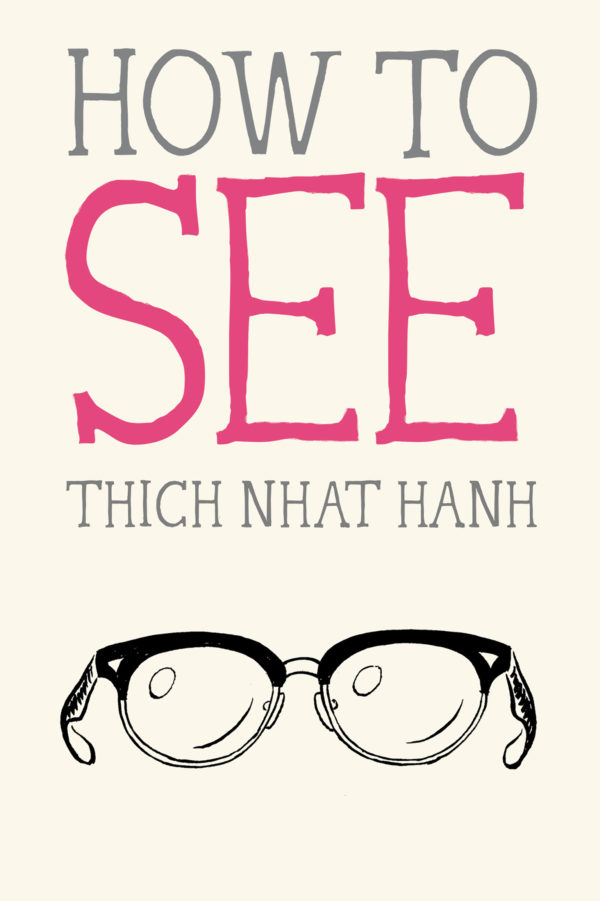Water reflecting
The clear still water of a mountain lake reflects the mountain and the sky with pristine clarity. You can do the same. If you are calm and still enough, you can reflect the mountain, the blue sky, and the moon exactly as they are. You reflect whatever you see just as it is, without distorting anything.
River of perceptions

In each of us there is a river of perceptions. Perceptions arise, stay for a period of time, and cease to be. When our mind is not calm, we do not see clearly. Like the surface of a lake on a windy day, the image we see is distorted. Our perceptions are often erroneous, and cause us to suffer and cause others to suffer. It is very helpful to look deeply into the nature of our perceptions, without being too sure of anything. When we are too sure, we suffer. When we ask ourselves, “Are you sure?” we have a chance to look again and see if our perception is correct or not.
Sign or reality?
We are convinced that our perceptions are correct and complete, yet often they are not. In the Chinese character for perception, the upper part is “sign” or “appearance,” and the lower part is “mind.” When we perceive something, an image of that thing—a sign—is created in our mind, and in many cases that sign is illusory. It is very easy to confuse our mental image of something with its reality. It is important not to be too sure of our perceptions.
The snake
Imagine you are walking in the twilight and you see a snake. You scream and run into the house to get your friends, and all of you rush outside with a flashlight. But when you shine your light on the snake, you discover it isn’t a snake at all, it’s just a piece of rope. Mistaking the rope for a snake is a wrong perception. Mindfulness helps us avoid being caught by our wrong perceptions.
Seeing the true nature of things
The practice of full awareness is to look deeply in order to see the true nature of things and go beyond our inaccurate perceptions. Seeing a rope as a snake, we may cry out in fear. Fear is a feeling brought about as a result of our wrong perception. Our perceptions are often inaccurate and can bring about strong feelings and reactions and cause much unnecessary suffering. Once we have seen the true nature of the object of our fear, our fear will vanish.
The source of our perceptions
The source of perception, our way of seeing, lies in our unconscious mind. Most of our perceptions are erroneous. They carry with them all the errors of subjectivity. We praise or blame, are happy or complain depending on our perceptions. Our perceptions are made of many things, including our afflictions, such as craving, anger, and ignorance, as well as our habit energies and past experiences. Whether we are happy or whether we suffer depends largely on our perceptions. It is important to look deeply into our perceptions and recognize their source.

Good or bad luck?
One day a farmer went to the field and found that his horse had run away. The people in the village said, “Oh, what bad luck!” The next day the horse returned with two other horses and the village people said, “What good fortune!” Then the farmer’s son was thrown from one of the horses and broke his leg. The villagers expressed their sympathy, “How unfortunate.” Soon after, a war broke out and young men from the village were being drafted. But because the farmer’s son had a broken leg, he was the only one not drafted. Now the village people told the farmer that his son’s broken leg was really “good luck.” It is not possible to judge any event as simply fortunate or unfortunate, good or bad, as this age-old story shows. You must travel throughout all of time and space to know the true impact of any event. Every success contains some difficulties, and every failure contributes to increased wisdom or future success. Every event is both fortunate and unfortunate. Fortunate and unfortunate, good and bad, these concepts exist only in our perceptions.
Transcending signs
Everything is born from our mind, from our way of looking. Deception is born from signs, external appearances. According to the Diamond Sutra, “In a place where something can be distinguished by signs, in that place there is deception.” In other words, where there is perception, there is deception. Our practice is to transcend signs to see more clearly. Until we look deeply into reality and discover its true nature of impermanence and interconnectedness, we will continue to be fooled by signs. When we transcend signs, notions, and ideas, we are in touch with the ultimate reality. We need to see through the outer form to be in touch with the substance. When we’re no longer deceived by signs, our perceptions become insight.
The thing in itself
When we think of a table, we see an image of that table in our mind. But we must remember that our concept is not the thing itself. It’s just our perception, which might in fact be very different from the table. A termite may perceive a table as a feast, and a physicist may perceive it as a mass of rapidly moving particles. The more we practice looking deeply, the more accurate our perceptions can be. But they are still perceptions.
Everything is possible
Nagarjuna, the second century Buddhist teacher, said, “Thanks to emptiness, everything is possible.” Emptiness is another term for nonself; when we say things are empty, it means they are without a separate self. Nonself and impermanence are two sides of reality; impermanence is looking at reality in terms of time, and nonself is looking at reality in terms of space. When we look deeply into our fears, we can see our desire for permanence and our fear of change. But impermanence and nonself are not something negative. Impermanence means transformation at every moment. Therefore we can say, “Thanks to impermanence, everything is possible.”

➛ The above excerpts are from the book How to See, part of The Mindfulness Essentials series by Zen Master Thich Nhat Hanh. How we develop misperceptions, how we can gain insight, and how mindfulness practices can help us see ourselves, each other, and the world around us more clearly are just a few of the topics touched upon in this book. In brief meditations accompanied by sumi ink drawings by Jason DeAntonis, Thich Nhat Hanh helps us focus on perceptions and challenging situations.

The abstract concepts are a bit difficult to grasp. Thank you for this wonderful app full of a variety of topics.
Thank you, dear friend, for your interest 🙏
A lotus to you,
Plum Village App Team
Sign or reality?
Hi, studying chinese and i’m curious which character you are referring to in this section.
Thanks